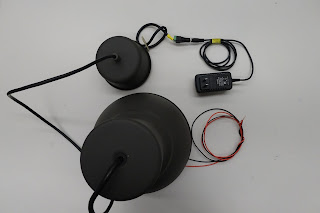Since we are using a gutted lamp we decide to use the
existing wiring to carry the 12v needed to power the LEDs and everything else.
Since the arduino can be powered by USB and 12v is the same as what comes out
of the cigarette lighter outlet in a car, a car USB charger was perfect to
power the arduino without having to mess with converting the voltage. everything would hang by this cord, through the container, and the extra wiring through the MDF piece. We accounted for all of the wires and the cigarette lighter USB charger worked perfectly. The 12v successfully powers the LEDs and the USB charger powered the Arduino and all of the pieces on the prototype board including the relays and ultrasonic sensor.




No comments:
Post a Comment